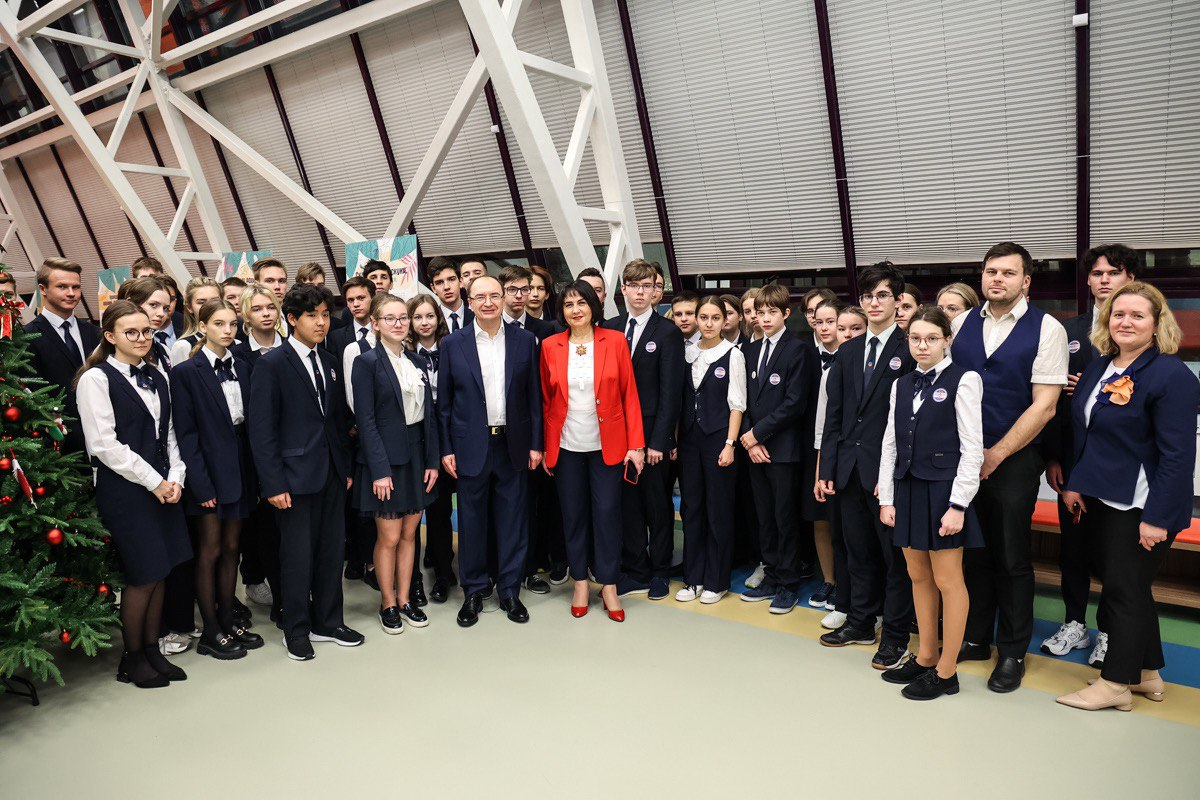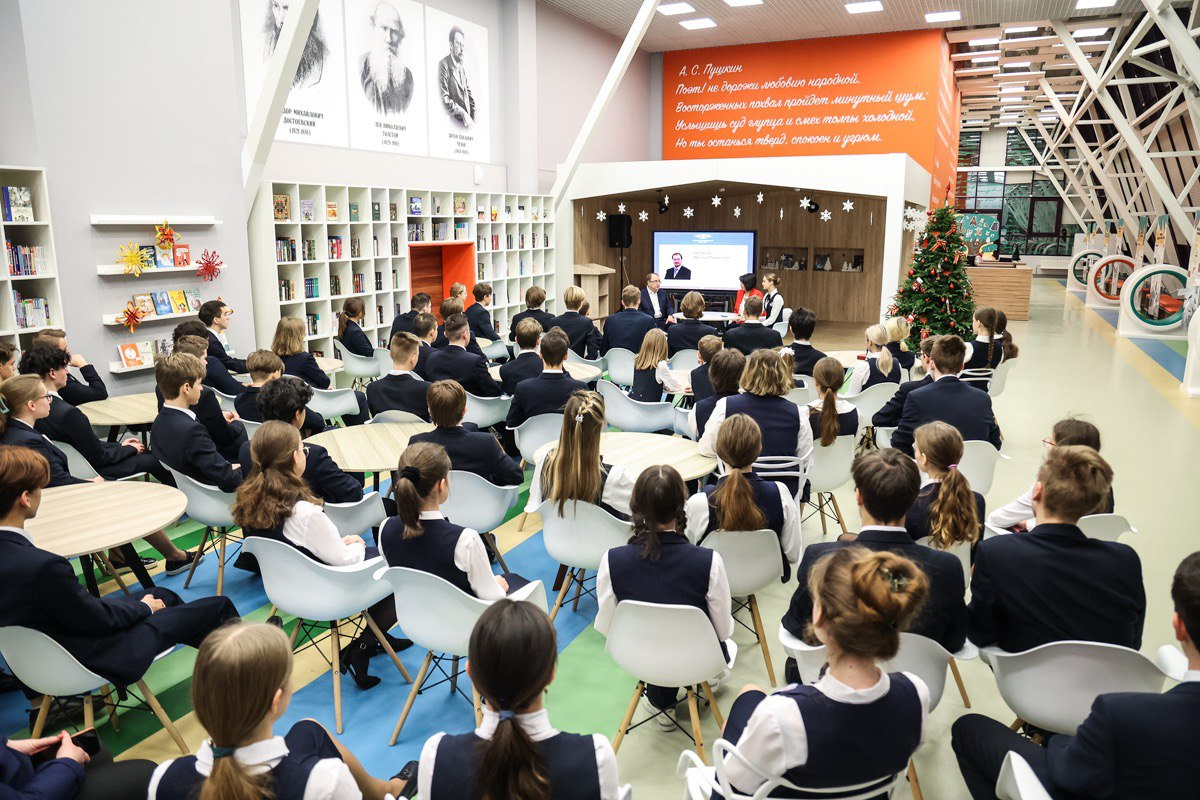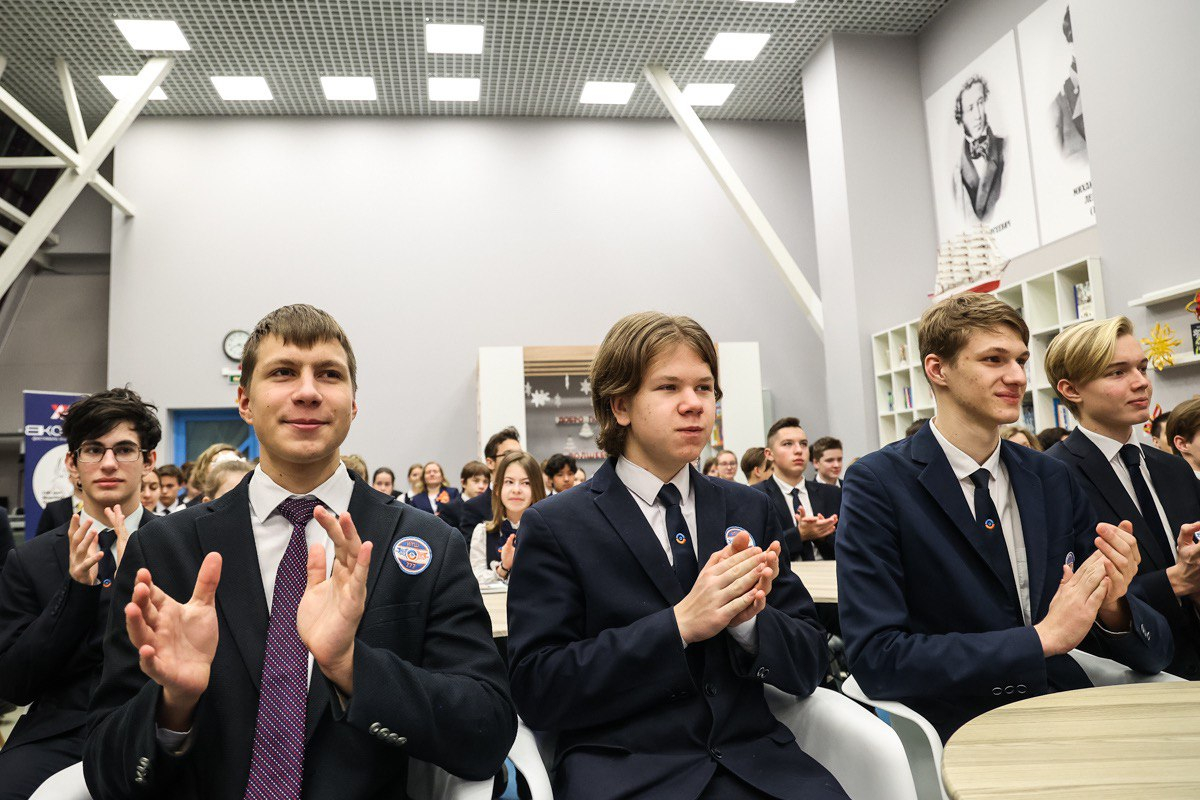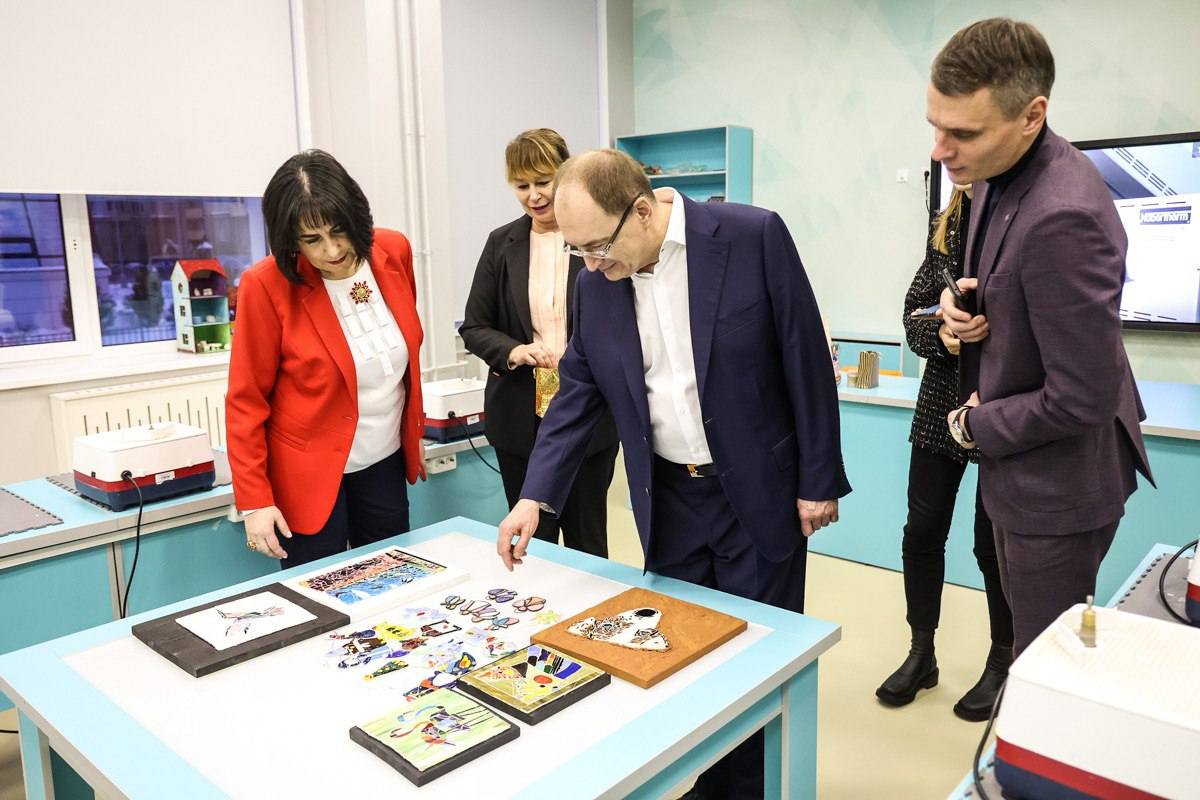Scientists and students of St Petersburg University give lessons at school
A St Petersburg University Day was held at the Engineering and Technology School No 777. Our teachers and students delivered a number of lectures to students of different grades. They also organised master classes devoted to solving olympiad tasks. In addition, they introduced school students to: conflictology; sociology; modelling of unmanned aerial vehicles; and soft skills development.
The event started with a meeting of the ’Informal Dialogues. Way to Success’ series. Nikolay Kropachev, Rector of St Petersburg University and Corresponding Member of the Russian Academy of Sciences, spoke as a guest there. When answering the school students’ questions about current trends in science, he said that Russia is always in need of fundamental research. The future strength of our country depends on it.
The most demanded areas for Russia are listed in the Fundamental Research Programme. It includes: high-performance computing; artificial intelligence; creation of new tailor-made materials; genomic research; bioinformatics; and pharmacology.
The Rector emphasised that the University is focused on those areas when holding its own grant competitions. He suggested that school students should get acquainted with government regulations in order to find the research areas they feel comfortable with and to plan their careers in advance.
The school students also asked Nikolay Kropachev about the projects he had initiated. They were devoted to the computerisation of courts and creation of the first robotic library in Russia. The young people were interested in how these projects had been born. They also asked the Rector what new ideas are to be implemented in the near future. Professor Kropachev explained that the University is engaged in computerisation and transformation in all directions in order to become more open to society.
’When in 2010 we were drafting the St Petersburg University Strategic Plan, we included two items into in it, “Expert University” and “Open University”. According to our colleagues, St Petersburg University has long been accessible to those who know about its capabilities. Yet most people simply did not know about them,’ Nikolay Kropachev noted. ’Now, at the request of various organisations and government agencies, we annually prepare about 2,000 expert opinions in a wide variety of fields, from engineering to linguistics. All of them are in the public domain. There are 3 million exhibits at the University museums, while the Kunstkammer has only 1.5 million. Ten years ago, even I did not know about them, because they were closed. Today, St Petersburg University museums are represented online and hold a huge number of open exhibitions. We have a Research Park with cutting-edge equipment. It is also accessible to you. About a dozen schools are using our lab capabilities.’
We have opened up to the world. And this is the most important duty of the University ─ to make its intellectual resources available to the public.
Nikolay Kropachev, Rector of St Petersburg University, Corresponding Member of the Russian Academy of Sciences
In addition, the Rector spoke about the applicants demanded by employers within the framework of sponsored admissions. He explained why schools and universities should cooperate with future employers of their graduates. He also explained how he had decided to cancel the curfew in the University halls of residence, and shared his story of choosing the profession of a lawyer.
During the St Petersburg University Day at school No 777, the University scientists and students gave lessons in a variety of subjects. Evgenii Kalinin, Assistant Professor in the Department of Radiochemistry, spoke about how isotope archaeology made it possible to study ancient civilisations. It was this method that allowed us to understand when and why the dolmens of the North Caucasus had been built. These are ancient megaliths whose purpose has been a mystery for quite a long time. These monuments are not just mere heaps of stones. They were made up of separate slabs or blocks, in which grooves were made so that they overlap each other according to a certain geometry. They were carved into the rocks. The students learned that regardless of the size of the dolmen, each of them had a portal part with a round hole of a fixed radius, and the inner chamber was smoothly finished. The construction quality is amazing, given that the dolmens were built by people of the Bronze Age. They had at their disposal only simple tools made of a low-tech alloy. In total, there are about 2,800 ancient megaliths located between Taman and Batumi. They survived earthquakes, wars and the struggle against religious cults. This cultural phenomenon was widespread throughout the world. For example, only in the Korean Peninsula, about 80,000 dolmens were found in the 1950s.
’In 2009, in a mountain range near the village of Agoi (the Tuapsinsky District of Krasnodar Krai), on the banks of the Kolikho River, a dolmen was discovered buried at a depth of about 2.5 metres as a result of a mudflow or avalanche. It contained the remains of about 70 people. They were preserved due to the fact that they had been lying underground all of that time. It was a great success, since it was the only dolmen with a burial found,’ Evgenii Kalinin noted. ’Archaeologists, anthropologists, historians, physicians, and radiochemists took part in the research, because many questions had to be solved. We wanted to know how those people had lived, what they had eaten, what diseases they had suffered from, and what the climate had been like back then. I studied the chemistry of compounds labelled with carbon-14. That enabled me to take part in that work.’
During the lecture, Evgenii Kalinin told the audience how archaeological and fossil objects are dated based on determining the life cycle of carbon-14. He also spoke on how material is prepared for sample processing, and what corrections should be made when performing calculations. He said that scientists had managed to establish the age of the bone remains in the burial. The oldest one can be dated back to about 1800 BC while the youngest one ─ to 1200–1100 BC. A genetic examination showed that all those people belonged to the same genus. Thus, we can conclude that the Kolikho dolmen had been used as a burial chamber for almost 650 years.
The St Petersburg University Day continued with a master class from the students of the Mediation Centre. St Petersburg University students played out a situation demonstrating the process of conflict mediation. They showed how mediation made it possible to determine the true positions of the parties. They also offered the school students to try to choose the most resourceful solutions to several difficult situations. Experts of the St Petersburg University Psychological Clinic held a master class on soft skills developments, while representatives of the career guidance department organised a series of interactive classes and business games. The leaders and members of the group for the synthesis and study of nano-sized particles and nano-structured materials and the group for the numerical study of nano-objects and nano-structured systems spoke about the creation of nanotechnological solutions for applied problems and presented their developments in the field of environmental science, medicine and cosmetology.






